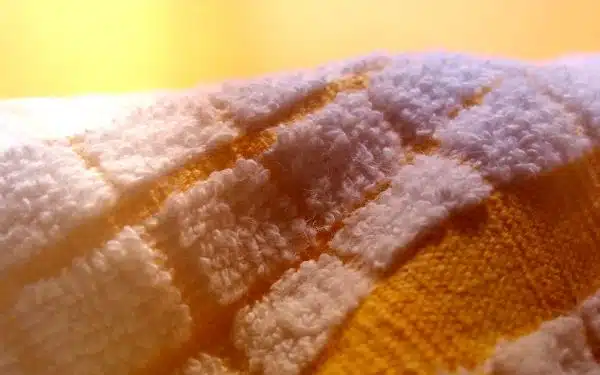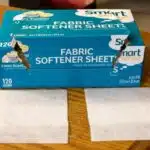Air-drying clothes is a great way to save energy and money, as well as preserve the longevity of your garments. However, one of the biggest concerns when air-drying clothes is how to keep them soft and comfortable to wear after they have dried. Many people find that air-dried clothes can be stiff and scratchy, leaving them feeling uncomfortable on their skin.
As a laundry and fabric care expert, I understand the importance of keeping clothes soft and comfortable for daily wear. In this article, I will share my tips on how to keep clothes soft after air-drying, so you can enjoy comfortable and long-lasting clothing without having to rely on a dryer. These tips are simple and easy to follow, allowing you to take care of your clothes in an efficient and effective manner while also saving energy and reducing your carbon footprint.
The Benefits Of Air-Drying Clothes
Air-drying clothes is a cost-effective and sustainable alternative to using a dryer. It has numerous benefits that make it an attractive option for many people. Firstly, air-drying clothes can help you save on energy bills, as dryers are one of the most energy-demanding appliances in homes. Additionally, air-drying does not cause wear and tear on clothes like dryers do, which can help extend the life of garments and reduce replacement costs.
Another benefit of air-drying clothes is its convenience. Unlike dryers, air-drying requires no special skills or equipment. You can simply hang your clothes outside on a line or inside on a drying rack and let the natural air currents do their work. This makes it easy to incorporate into your daily routine and saves you time since you don’t have to wait for the dryer cycle to finish.
Lastly, air-drying clothes is also environmentally friendly. Dryers emit carbon dioxide and other gases that contribute to climate change. By choosing to air-dry your clothes instead of using a dryer, you are reducing your carbon footprint and making a positive impact on the environment.
Despite these benefits, there are still some common problems with air-dried clothes that need to be addressed. Such issues include stiffness, wrinkles, and loss of softness in fabrics. In the next section, we will discuss how to overcome these problems and keep your air-dried clothes feeling soft and comfortable.
Common Problems With Air-Dried Clothes
A common problem with air-dried clothes is static cling, which occurs when garments rub against each other and generate static electricity. This issue can be particularly problematic during the winter months when the air is dry and lacks humidity. Static cling can cause clothes to stick together, making them difficult to separate, and can also result in embarrassing situations where clothing clings to the body.
Another issue with air-dried clothes is stiffness. Clothes that are not tumbled dried often become stiff because the fibers in the fabric have dried in a fixed position. This stiffness can make clothes uncomfortable to wear and give them an unattractive appearance. Additionally, stiff clothes are more prone to wrinkles, which can be difficult to remove without an iron.
Fortunately, there are several solutions to these problems with air-dried clothes. One solution for static cling is to add a dryer sheet or fabric softener during the wash cycle. Alternatively, you can add a ball of aluminum foil or a safety pin to your laundry load, as these items help discharge static electricity. To avoid stiffness in air-dried clothes, try using a fabric softener during the rinse cycle or hang your clothes on hangers instead of laying them flat to dry.
Understanding fabric types is essential for effective laundry care. Different fabrics require different washing and drying methods; therefore, it’s crucial to know how each type of material will behave when exposed to water and heat. With this knowledge, you’ll be better equipped to handle common laundry problems such as static cling and stiffness while keeping your clothes looking their best.
Understanding Fabric Types
Understanding Fabric Types is crucial when it comes to proper care techniques. Different fabrics require different methods of cleaning and handling to ensure that they remain in good condition. Some fabrics are more delicate than others, which means that special attention must be taken when washing or drying them.
Cotton, for example, is a common fabric used in clothing items, such as t-shirts and jeans. It is a durable material that can withstand high temperatures during washing and drying. On the other hand, silk is a much more delicate material that requires gentle care. It should be hand-washed in cool water and air-dried to avoid damage.
To properly care for your clothes and keep them soft after air-drying, it is essential to understand the fabric type. Here are four tips to help you achieve optimal results:
- Use a fabric softener during the wash cycle.
- Dry clothes on a low heat setting or hang them outside on a clothesline.
- Use dryer balls or tennis balls in the dryer to fluff up clothes and prevent stiffness.
- Avoid overloading the washer or dryer as it can cause excessive wrinkling and stretching.
By following these tips, you can ensure that your clothes remain soft after air-drying while also prolonging their lifespan. In the next section, we will discuss how sorting your clothes before air-drying can further enhance their overall quality and appearance without damaging the fibers of each garment.
Sorting Clothes For Air-Drying
When it comes to air-drying clothes, one of the most critical first steps is sorting your garments. Sorting techniques can help you avoid damaging delicate fabrics and ensure that your clothes dry evenly and quickly. One effective method is to sort by fabric type, separating heavier items like denim from lighter pieces like cotton or silk. Another approach is to sort by color, keeping whites separate from colors to prevent dye transfer.
Once you’ve sorted your clothes, it’s essential to consider the drying space available. Ideally, you want to hang your clothes in an area with good air circulation and minimal humidity. If you’re hanging clothes indoors, a well-ventilated room with open windows or a ceiling fan can be helpful. Alternatively, consider using a garment rack or drying line outside if weather permits.
To further protect your clothing during air-drying, consider using a mesh laundry bag or laying items flat on a towel rather than hanging them up. This approach can be particularly useful for knits or delicate fabrics prone to stretching or distorting when hung up. By following these simple sorting techniques and choosing appropriate drying spaces for your garments, you can help keep your clothes looking their best after air-drying.
Transition: Although sorting techniques and drying spaces are critical components of proper air-drying methods, there are additional steps you can take to ensure that your clothing stays soft and comfortable after washing. One option is to use fabric softener during the laundry process – let’s explore this step in more detail in the next section.
Using Fabric Softener
After sorting clothes for air-drying, the next step is to ensure that they remain soft even without the aid of a dryer. Air-drying can cause clothes to feel rough and stiff, which can be uncomfortable to wear. However, there are several ways to keep clothes soft after air-drying without using fabric softeners.
Fabric softener alternatives are an excellent option for those who prefer not to use chemical-based products. Wool dryer balls, for instance, can help soften clothes naturally. They work by separating and fluffing up laundry during the drying process, reducing wrinkles and static cling. Another alternative is using baking soda as a natural fabric softener. Adding half a cup of baking soda to your laundry cycle helps balance the pH level of the water and keeps clothes feeling soft.
Natural fabric softening methods are also worth considering when looking for ways to keep clothes feeling comfortable after air-drying. One such method is adding white vinegar during the rinse cycle. Vinegar acts as a natural fabric conditioner and helps break down detergent residue that can make clothes stiff and scratchy. Additionally, vinegar helps prevent static cling by reducing the buildup of static electricity on fabrics during drying.
Transition: While fabric softener alternatives provide an excellent solution for keeping clothes feeling comfortable after air-drying, rinsing clothes with vinegar remains one of the most effective methods available.
Rinsing Clothes With Vinegar
Using a vinegar solution to rinse clothes after air-drying is an effective method for keeping them soft. Vinegar is a natural fabric softener that removes any residue left by laundry detergents and helps prevent static cling and wrinkles. To make the vinegar solution, mix one cup of white vinegar with a gallon of water and use it as a final rinse after washing your clothes.
Another advantage of using vinegar as a fabric softener is that it is an eco-friendly and affordable alternative to commercial fabric softeners. Commercial fabric softeners can contain chemicals that are harmful to the environment and may cause skin irritation or allergic reactions in some people. By using vinegar, you can avoid these potential health hazards while still achieving the desired softness for your clothes.
If you prefer not to use vinegar, there are other alternative methods for keeping clothes soft after air-drying. One option is to use wool dryer balls, which help fluff up your clothes and reduce drying time. Another option is to add baking soda to the wash cycle, which can help soften hard water and neutralize odors. Experimenting with different methods can help you find what works best for your laundry needs.
Transitioning into the subsequent section about adding baking soda to the wash, another effective way to keep clothes soft after air-drying is by incorporating baking soda into your laundry routine. Adding half a cup of baking soda to the wash cycle can help balance pH levels in the water and remove any lingering odors from your clothes. This method also helps reduce static cling and keeps fabrics feeling fluffy and fresh.
Adding Baking Soda To The Wash
Baking soda is a common household item that has been used for many years as a natural cleaner and deodorizer. It can also be added to the laundry to help keep clothes soft after air-drying. However, some people may be allergic to baking soda or prefer not to use it for other reasons.
If you are looking for baking soda alternatives, there are several options available. One alternative is white vinegar, which can help soften clothes and remove odors. Another option is using a liquid fabric softener during the rinse cycle. This will help condition the fabric and leave it feeling soft.
It is important to note that some people may have allergies or sensitivities to baking soda. If you experience any allergic reactions or skin irritations when using baking soda in your laundry, discontinue use immediately and try one of the alternative methods mentioned above.
- White vinegar can be used as an alternative to baking soda
- Liquid fabric softener can also condition the fabric
- Some people may have allergies or sensitivities to baking soda
- Discontinue use of baking soda if any allergic reactions occur
Using these alternatives can still achieve the same result as adding baking soda to your laundry. It is important to find what works best for you and your family’s needs while ensuring that all materials being used are safe and effective. In the next section, we will discuss how using dryer balls or woolen items can further soften clothes without needing any additional products.
Using Dryer Balls Or Woolen Items
Having freshly laundered clothes is a great feeling, but air-drying them can sometimes leave them feeling stiff and uncomfortable. Fortunately, there are alternative methods to keep your clothes soft without the use of a dryer. In addition to adding baking soda to the wash, there are DIY solutions that can help keep your clothes soft after air-drying.
One effective method is using dryer balls or woolen items. These items work by creating space between your clothes as they tumble around in the dryer, allowing air to circulate more effectively. This helps prevent fabrics from clumping together and becoming stiff during the drying process. Woolen items like dryer balls can also absorb moisture from your clothes, which helps speed up the drying time and prevent wrinkles.
Another option is shaking out your clothes before hanging them up to dry. This technique involves holding each garment by its shoulders and giving it a quick snap or shake. Doing this helps loosen up any fibers that may have become compressed during washing, which can help prevent stiffness and keep your clothing looking fresh and new.
In summary, there are various ways to keep your clothes soft after air-drying. Utilizing methods such as using dryer balls or woolen items and shaking out clothing before hanging them up are simple yet effective solutions for achieving soft, comfortable garments. By incorporating these techniques into your laundry routine, you can enjoy the benefits of air-drying without sacrificing the softness of your clothing.
Shaking Out Clothes Before Hanging
As a laundry and fabric care expert, I always recommend shaking out your clothes before hanging them to dry. This simple yet effective step has many benefits that can improve the quality of your garments. Shaking out clothes helps to prevent wrinkles and creases from forming, which can be difficult to remove later on. Additionally, it helps to loosen any dirt or debris that may have accumulated on the fabric during air-drying.
To effectively shake out your clothes, start by gently holding the garment by the shoulders or waistline. Give it a few quick flicks with your wrist to release any trapped air and fluff up the fabric. Then, flip the garment over and repeat on the other side. Be careful not to shake too vigorously as this can damage delicate fabrics or cause stretching in heavier items like jeans.
One tip for effective shaking out of clothes is to do it immediately after removing them from the washing machine. This will ensure that they are still damp enough to easily release any wrinkles or creases. For heavier items like towels or blankets, you may need to give them an extra shake halfway through drying to keep them soft and fluffy. By incorporating this simple step into your laundry routine, you can enjoy softer, wrinkle-free clothes every time.
Moving forward into our next section about avoiding overcrowding on the clothesline, it’s important to note how closely related these two steps are in achieving optimal air-drying results for your clothes.
Avoiding Overcrowding On The Clothesline
After shaking out clothes before hanging, it is important to avoid overcrowding the clothesline. According to a study by the American Cleaning Institute, overloading the clothesline can cause fabrics to become stiff and lose their softness. To keep clothes soft after air-drying, it is essential to maximize space on the clothesline while also using clothespins properly.
Here are four tips for maximizing space and using clothespins properly:
- Hang heavier items like towels and jeans on the bottom of the line to prevent them from weighing down lighter fabrics.
- Use hangers or clips to hang small items like socks and underwear.
- Space out items evenly along the line to allow for proper air circulation.
- Use enough clothespins to secure each item without causing creases or marks on the fabric.
By following these tips, you can ensure that your clothing dries evenly and retains its softness. However, even with proper hanging techniques, some fabrics may still feel stiff after air-drying.
In the next section, we will discuss how fluffing and stretching clothes after drying can help restore their softness and flexibility.
Fluffing And Stretching Clothes After Drying
After air-drying clothes, it is common for them to feel stiff and unyielding. However, there are several fluffing techniques and stretching methods that can be used to soften them up. These techniques are particularly useful for fabrics such as cotton and linen that tend to become stiff when air-dried.
One effective fluffing technique is to toss the clothes into a dryer on a low heat setting with a few clean tennis balls or dryer balls. The balls help to break up any clumps in the fabric and create space between the fibers, resulting in softer clothes. Alternatively, you can use a fabric softener sheet in the dryer which will leave your clothes smelling fresh while also reducing static cling.
Stretching is another method for softening clothes after air-drying. Simply grab opposite corners of the garment and stretch gently until it feels more pliable. This technique works particularly well for knits and sweaters, but be careful not to overstretch as this can cause damage to the fabric. It’s important to note that stretching should only be done on damp or slightly damp garments as dry fabrics may not respond well to this method.
| Fluffing Techniques | Stretching Methods |
|---|---|
| Use tennis balls or dryer balls in the dryer | Gently stretch damp garments by hand |
| Add fabric softener sheets in the dryer | Place heavy items on top of slightly damp clothing (e.g., towels) |
| Shake out garments vigorously before hanging | Pin wet clothing onto hangers |
Overall, there are several ways to ensure that your air-dried clothes remain soft and comfortable against your skin. By using these fluffing techniques and stretching methods, you can keep your clothes looking their best while also prolonging their lifespan. In the next section, we’ll explore ironing or steaming clothes after drying as another option for achieving wrinkle-free garments.
Ironing Or Steaming Clothes After Drying
As the saying goes, “looking sharp is half the battle won.” Ironing or steaming clothes after air-drying is an essential step for anyone who takes pride in their appearance. Not only does it give your clothes a crisp and polished look, but it also helps to remove any wrinkles that may have formed during the drying process.
Ironing has been around for centuries and is still one of the most effective methods of removing wrinkles from clothes. The benefits of ironing go beyond just getting rid of wrinkles; it also helps to sanitize your clothes by killing any bacteria that may be present. Additionally, ironing can help to restore the shape of your clothing, especially if you’ve washed them with hard water or they have been stretched out during wear.
However, steaming has become increasingly popular in recent years as a quick and easy alternative to ironing. Steaming vs. ironing clothes involves using hot steam to relax the fibers in your clothing, making them easier to smooth out and eliminating wrinkles in the process. While steaming may be more convenient than ironing, it’s important to note that it may not be as effective at removing deep-set wrinkles or restoring the shape of your clothing as ironing would be.
To summarize, whether you choose to steam or iron your clothes after air-drying ultimately depends on personal preference and what works best for your wardrobe. If you’re looking for a more thorough method that will help sanitize and restore shape to your clothing, then ironing may be the way to go. However, if convenience is key for you and you’re just looking for a quick fix to eliminate light wrinkles, then steaming might be your best bet.
Storing Clothes Properly
- Folding clothing properly is key to maintaining the shape, texture, and fabric integrity of the garment.
- Hanging garments on hangers with wide shoulders is the best way to prevent wrinkles and ensure the clothing’s structure remains intact.
- Taking the time to read care labels before washing and storing clothing is essential for avoiding damage from improper laundering.
- Choosing the right kind of hanger for heavier items like coats, jackets, and suits can prevent the item from losing its shape.
- To keep clothing soft and wrinkle-free, avoid over-drying and air-dry whenever possible.
- Ironing or steaming garments can help to keep them looking crisp, but be sure to use the correct heat settings for the fabric type to avoid damage.
Folding
Proper folding is key to keeping clothes soft after air-drying. Many people make the mistake of simply hanging their clothes on hangers or laying them flat on a surface to dry, but these methods can lead to wrinkles and stiffness in the fabric.
To prevent wrinkles, it’s important to fold clothes carefully and neatly. Start by laying the garment flat on a clean, flat surface. Smooth out any wrinkles with your hands before beginning to fold. Fold sleeves and pant legs in towards the center of the garment, then fold in half once or twice depending on its size. Be sure not to overstuff drawers or shelves when storing folded clothes, as this can also lead to wrinkles.
Another tip for preventing stiffness is to avoid using too much detergent when washing your clothes. Excess detergent can leave residue that stiffens fabrics over time. Use only the recommended amount for your load size and consider using a fabric softener or vinegar rinse during the wash cycle for an extra boost of softness.
By following these simple steps for proper folding and laundering, you can keep your air-dried clothes feeling soft and comfortable for years to come. Don’t let stiff clothing ruin your day – take care in how you store and launder your garments!
Hanging
When it comes to storing clothes properly, hanging them is a popular option. However, not all hangers are created equal. Using the wrong type of hanger can lead to stretched-out shoulders or misshapen garments. It’s important to choose the right hanger for each piece of clothing.
For tops and dresses, use a broad-shouldered hanger to help maintain their shape. Delicate fabrics like silk or lace should be hung on padded or velvet-covered hangers to prevent snags and tears. Pants should be hung by the waistband on clip or clamp hangers to avoid creases. Skirts can be hung by the waistband or folded in half over a regular hanger.
When hanging clothes, there are also best practices to follow. Leave enough space between garments to prevent wrinkling and allow air flow. Avoid overcrowding your closet as this can cause clothes to become crushed and misshapen over time. If you have limited space, consider using slimline hangers that take up less room than traditional ones.
By following these tips for hanging and choosing the right type of hanger, you can keep your clothes looking their best while also maximizing storage space in your closet. Proper storage not only helps extend the life of your clothing but also makes getting dressed each day more enjoyable!
Caring
Properly storing clothes is an essential part of maintaining their quality and prolonging their life. However, it’s not just about choosing the right hanger or leaving enough space in your closet. Caring for your clothes also involves using natural fabric care methods and alternatives to traditional fabric softeners.
Fabric softeners may make your clothes feel softer and smell better, but they can actually damage fabrics over time. Chemicals in these products can break down fibers and cause discoloration, leading to a shorter lifespan for your favorite pieces. Instead, try using natural fabric softener alternatives like white vinegar or wool dryer balls. These options are gentle on fabrics and can help reduce static cling without any harmful chemicals.
In addition to using natural fabric care methods, it’s important to follow proper care instructions for each garment. This means reading labels carefully before washing and drying, using the appropriate water temperature and laundry detergent, and avoiding harsh chemicals like bleach or fabric softeners. By taking care of your clothes in this way, you’ll not only extend their life but also contribute to a more sustainable fashion industry overall.
Tips For Outdoor Drying
Outdoor drying techniques are an excellent way to give your clothes a fresh scent and reduce energy consumption. However, it can be challenging to keep them soft and comfortable after air-drying. Here are some fabric care tips for outdoor drying that can help you maintain the quality of your clothes.
Firstly, avoid overdrying your clothes in direct sunlight as it can cause damage to the fibers and make them stiff. Instead, choose a shaded area with good airflow and hang your clothes loosely on the line or rack. This will prevent wrinkles and creases that could also contribute to stiffness in the fabric.
Secondly, try adding vinegar or baking soda to the rinse cycle when washing your clothes. These natural ingredients help break down any soap residue left on fabrics, which can leave them feeling rough. Additionally, using fabric softeners or dryer sheets is not recommended as they contain chemicals that could build up on clothing fibers over time.
In summary, outdoor drying techniques are an eco-friendly approach to laundry care but require some extra steps to maintain softness and comfort. Choosing a shaded area with good airflow, hanging clothes loosely, and using natural additives like vinegar or baking soda can help achieve this goal without compromising quality. By following these simple fabric care tips, you can enjoy fresh-smelling and comfortable clothing every time you air-dry.
Conclusion: Enjoying Soft And Comfortable Clothes With Air-Drying
As we’ve discussed in the previous section, air-drying your clothes is an excellent way to save energy and reduce your carbon footprint. However, one of the downsides of drying clothes outside is that they can sometimes come out feeling stiff and uncomfortable. Fortunately, there are a few fabric care tricks you can use to keep your clothes soft and cozy even after air-drying.
Firstly, consider using a fabric conditioner when washing your clothes. Fabric conditioners work by coating the fibers of the fabric with a layer of softening agents that help to reduce friction and increase fluffiness. This means that clothes that have been treated with fabric conditioner will feel softer and more comfortable than those that haven’t.
Secondly, try adding vinegar to your wash cycle. Vinegar is a natural fabric softener that works by breaking down any mineral deposits or buildup on the fibers of your clothing. By doing so, it helps to restore the natural softness and flexibility of the fabric, leaving you with clothes that are both clean and comfortable.
Lastly, be mindful of how you dry your clothes. Avoid over-drying them, as this can cause damage to the fibers and make them feel rougher than they otherwise would. Instead, aim to remove them from the line or dryer while they’re still slightly damp, then give them a shake before folding or hanging them up.
By following these laundry hacks, you’ll be able to enjoy soft and comfortable clothes even after air-drying. So next time you’re doing laundry, give these tips a try – your wardrobe (and skin) will thank you!
Conclusion
Air-drying clothes is an excellent way to save money and energy while reducing your carbon footprint. However, air-drying can lead to stiff and scratchy clothes, making them uncomfortable to wear. To keep your clothes soft after air-drying, it is essential to understand the fabric types, sort the clothes accordingly, use fabric softeners, iron or steam the clothes after drying, and store them properly.
To emphasize the importance of sorting clothes for air-drying, it is interesting to note that combining different fabrics can lead to uneven drying times and cause wrinkling or stretching. For instance, thick towels require more time to dry than lightweight cotton shirts. Therefore, it is crucial to group similar materials together when hanging them out to dry.
In conclusion, as a laundry and fabric care expert, I encourage you to incorporate air-drying into your laundry routine for softer and comfortable clothes. By following these simple tips on sorting clothes based on fabric types, using fabric softeners, ironing or steaming after drying, and proper storage techniques will ensure your clothes remain soft even after air-drying. Remember that small changes in your laundry habits can make a significant impact on the environment while keeping your wallet happy!
Image Credits
- “Soft Orange Dish Cloth” by Golden_Ribbon (featured)





















![How To Wash And Care For White Clothes 21 The only genuine borax soap cleanses hygienically saves the clothes and hands. 20 Mule-Team brand Boraxo white laundry soap [front]](https://green-life.blog/wp-content/uploads/2023/05/YDXLLCovnOjq-150x150.jpg.webp)






![How To Remove Perfume Odors From Clothes 28 For pungency, strength, durability and delicacy of odor. Read's Grand Duchess Cologne. [back]](https://green-life.blog/wp-content/uploads/2023/05/b-myfoHrx-jq-150x150.jpg.webp)
